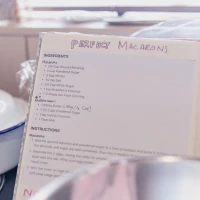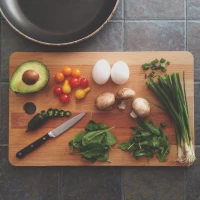Cooking is an art that can be perfected with practice, knowledge, and a few expert techniques. Whether you are a seasoned chef or a home cook looking to up your culinary game, these 23+ cooking tips and techniques will help take your creations to the next level. From mastering basic skills to exploring new flavors and culinary trends, this comprehensive guide has got you covered. So let’s dive in and discover the secrets to elevate your cooking skills!
1. The Power of Seasoning
Enhancing Flavor with Salt and Pepper
Salt and pepper are the cornerstones of seasoning. When used correctly, they can transform a bland dish into a burst of flavor. For optimal results, use freshly ground pepper and kosher or sea salt. It’s important to season ingredients at each stage of the cooking process to layer and enhance flavors. Remember, seasoning is a personal preference, so taste as you go to achieve the desired balance.
Exploring Herbs and Spices
Herbs and spices are a chef’s best friends. Experiment with different varieties to enhance the taste and aroma of your dishes. Some commonly used herbs include basil, thyme, rosemary, and cilantro, while popular spices include cumin, paprika, turmeric, and cinnamon. Don’t be afraid to mix and match to create unique flavor profiles.
2. Mastering Knife Skills
Choosing the Right Knife
Investing in good-quality knives is essential for efficient and safe cooking. A chef’s knife, a paring knife, and a serrated bread knife are must-haves in any kitchen. Each knife serves a specific purpose, whether it’s slicing, chopping, or dicing. Keep your knives sharp and well-maintained for optimal performance.
Proper Knife Technique
Proper knife technique not only ensures precision but also reduces the risk of accidents. Hold the knife firmly but not too tightly, with your index finger resting on the blade for control. Use a rocking motion when chopping or mincing. Practice the techniques to improve your speed and accuracy.
3. The Art of Meal Planning
Planning for Success
Meal planning is essential for efficient cooking and a healthy lifestyle. Before you head to the grocery store, take a few minutes to plan your meals for the week. Consider your dietary preferences, nutritional needs, and schedule while creating a well-balanced menu. Meal planning saves time, reduces food waste, and helps you make healthier choices.
Stocking a Well-Equipped Pantry
A well-stocked pantry is the foundation of successful meal planning. Having essential ingredients on hand allows you to whip up delicious dishes without running to the store. Stock up on staples like rice, pasta, canned beans, spices, and oils. Consider your cooking style and preferences when selecting pantry items.
4. Understanding Cooking Methods
Embracing Moist Heat Cooking
Moist heat cooking methods, such as boiling, poaching, and steaming, involve using water or other liquids to cook food. These methods are ideal for delicate ingredients like fish and vegetables, as they help to retain moisture and nutrients. Experiment with different flavors by adding herbs, spices, or aromatics to the cooking liquid.
Harnessing the Power of Dry Heat
Dry heat cooking methods, such as baking, roasting, grilling, and sautéing, involve cooking food without the use of liquid. These methods are great for achieving caramelization, creating crispy textures, and developing rich flavors. Use high heat for quick cooking and low heat for slow, gentle cooking.
5. The Importance of Temperature Control
Using a Food Thermometer
Temperature control is crucial when cooking meat, poultry, and seafood to ensure food safety and achieve desired doneness. Invest in a reliable food thermometer to accurately measure internal temperatures. Different types of meat require specific temperature ranges for optimal cooking.
Preheating the Oven
Preheating the oven is essential for even cooking and consistent results. Allow the oven to reach the desired temperature before placing your dish inside. This ensures that the cooking process starts immediately, leading to properly cooked and delicious meals.
6. Organizing Your Workspace
The Importance of a Clean and Organized Kitchen
A clean and organized kitchen sets the stage for successful cooking. Keep your workspace clutter-free and well-maintained. Have all your tools and ingredients within reach for efficient cooking. Regularly clean surfaces, utensils, and appliances to prevent cross-contamination and ensure food safety.
Mise en Place: Preparation is Key
Mise en place, a French term meaning “everything in its place,” refers to prepping and organizing ingredients before cooking. Chop vegetables, measure ingredients, and prepare your cooking equipment in advance. This saves time and allows you to focus on the cooking process.
7. Exploring Cooking Techniques
Braising: Tenderizing Tough Cuts of Meat
Braising involves searing meat on high heat, then slowly cooking it in liquid at a lower temperature. This technique is perfect for tougher cuts of meat, as it breaks down the collagen and tenderizes the meat. The result is a melt-in-your-mouth texture and rich flavors.
Sous Vide: Precise Cooking in a Water Bath
Sous vide is a cooking technique that involves vacuum-sealing food in a bag and cooking it in a water bath at a precise temperature. This method ensures even cooking and retains moisture and flavor. It’s an excellent technique for delicate proteins like fish or achieving a specific level of doneness in meats.
8. Exploring International Flavors
Asian Cuisine: Umami and Bold Flavors
Asian cuisine is known for its depth of flavor and umami-rich dishes. Experiment with ingredients like soy sauce, fish sauce, miso, and ginger to add complexity to your dishes. Embrace stir-frying, steaming, and fermenting techniques to create authentic Asian-inspired meals.
Mediterranean Cuisine: Fresh and Vibrant Flavors
Mediterranean cuisine is all about fresh, vibrant ingredients and simple cooking techniques. Incorporate olive oil, lemon, garlic, and fresh herbs like basil and oregano to infuse dishes with Mediterranean flavors. Grilling seafood and vegetables, and using hearty grains like couscous and bulgur, are common techniques in this cuisine.
9. The Art of Plating
Creating Eye-Catching Presentations
Food presentation is an essential aspect of culinary arts. A well-plated dish not only looks appealing but also enhances the dining experience. Consider color combinations, textures, and height variations when plating your creations. Use garnishes and sauces to add the finishing touches and elevate the visual appeal.
Embracing Minimalism
Minimalism in plating focuses on clean lines, simplicity, and allowing the natural beauty of the dish to shine. Arrange the main components of the dish in an aesthetically pleasing way without overcrowding the plate. This technique works particularly well with dishes that have vibrant colors and contrasting textures.
10. Staying Inspired and Trying New Recipes
Exploring Culinary Blogs and Websites
Culinary blogs and websites are treasure troves of inspiration and knowledge. Follow your favorite chefs, browse recipe collections, and explore new cooking techniques. Engage with online communities to learn from fellow food enthusiasts and share your own culinary adventures.
Trying New Ingredients and Recipes
Also you can read our related content: Ground Beef Meal Prep Containers are a convenient and practical solution for busy individuals who aim to eat nutritious, homemade meals throughout the week. These containers allow you to portion out your meals in advance, ensuring that you have delicious and protein-packed dishes ready to go whenever hunger strikes. With ground beef as the base ingredient, the possibilities are endless – from flavorful meatballs and hearty chili to mouthwatering burgers and comforting casseroles. These containers provide airtight storage, keeping your meals fresh and flavorful for days, and their stackable design saves valuable fridge and freezer space. Whether you’re an athlete looking to refuel or simply someone who values home-cooked convenience, ground beef meal prep containers are a game-changer in simplifying your weekly meal planning.
Keep your cooking skills fresh by constantly challenging yourself with new ingredients and recipes. Visit farmer’s markets, specialty food stores, and ethnic grocery stores to discover unique ingredients. Experiment with unfamiliar flavors and techniques to expand your culinary repertoire.
In conclusion, these 23+ cooking tips and techniques are sure to take your culinary creations to the next level. From mastering basic skills like seasoning and knife techniques to exploring international flavors and plating techniques, there is always something new to learn in the world of cooking. So roll up your sleeves, gather your ingredients, and let your creativity flow in the kitchen. Happy cooking!










